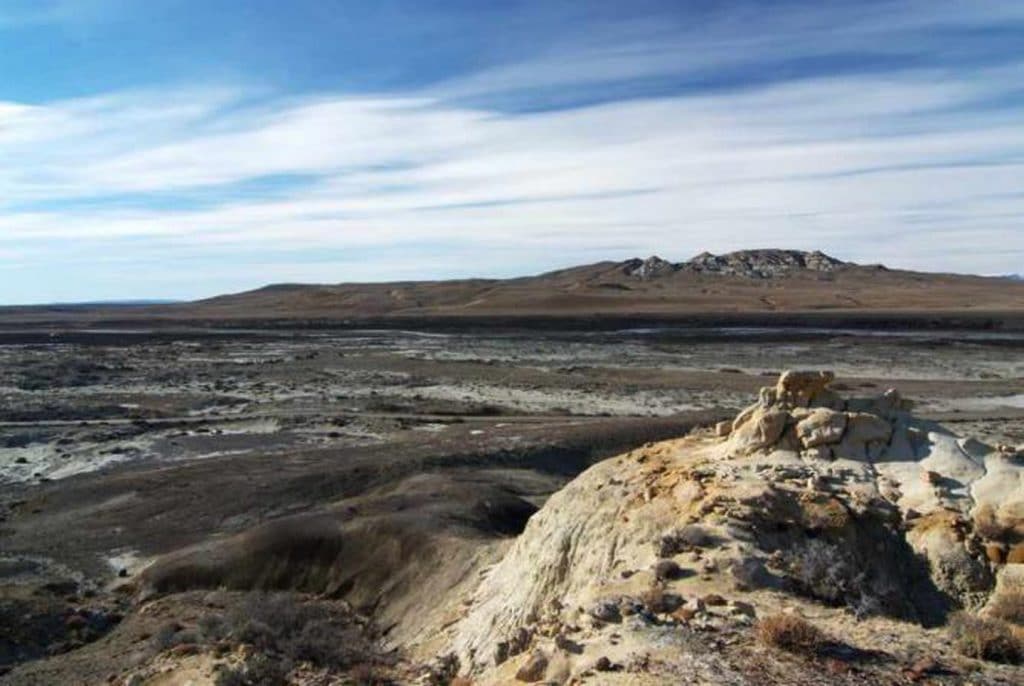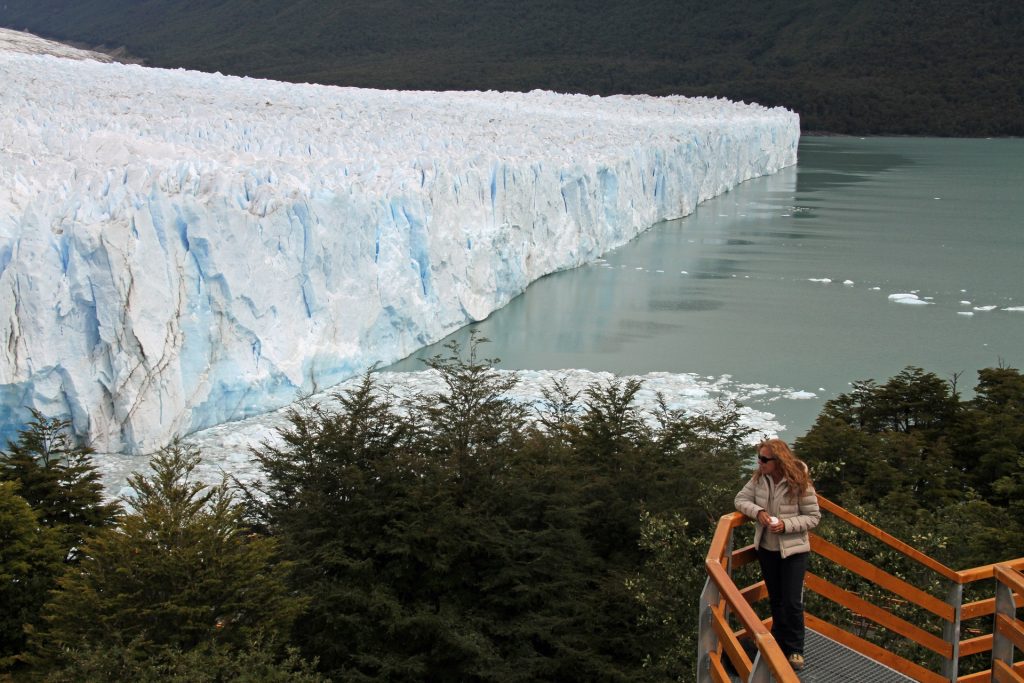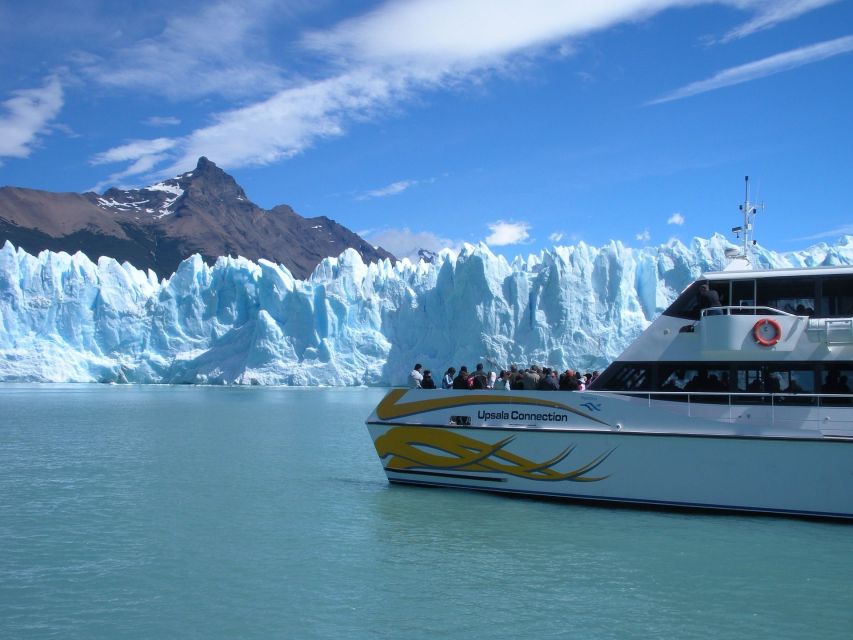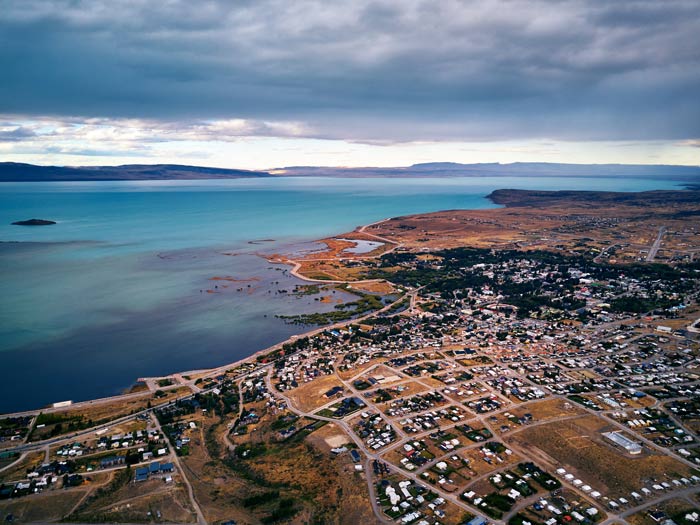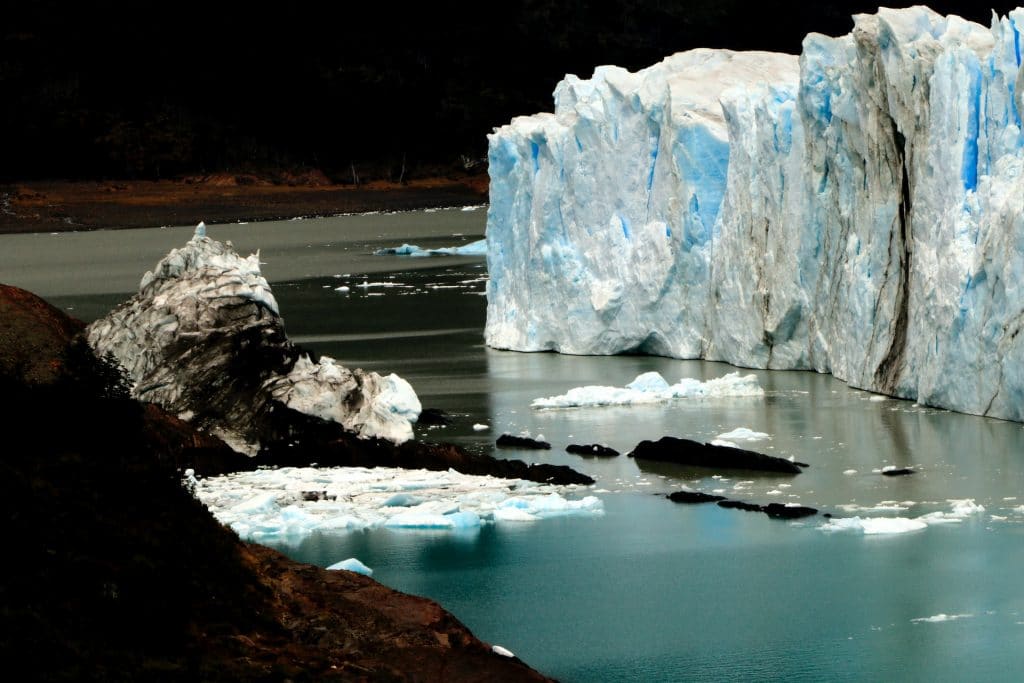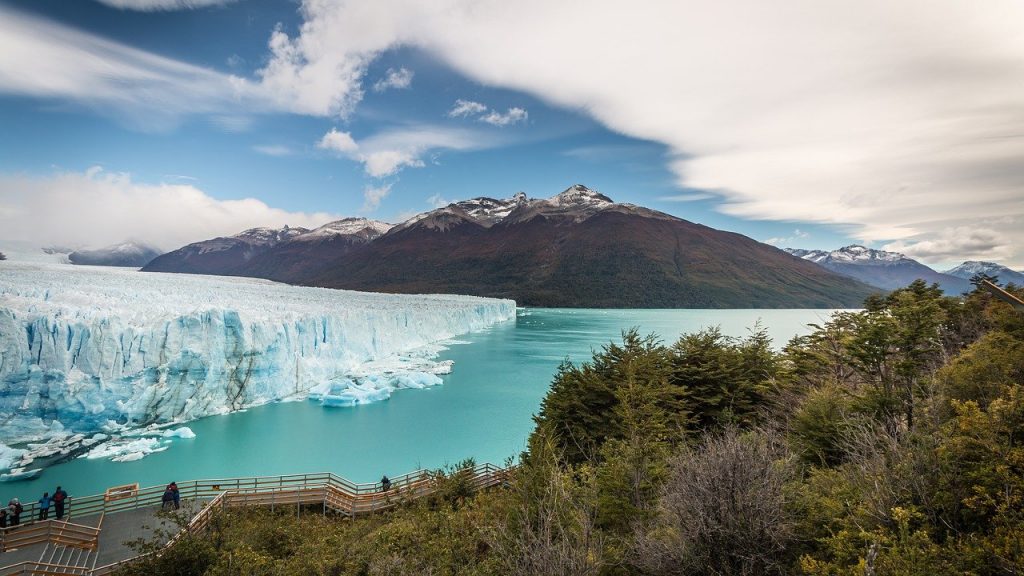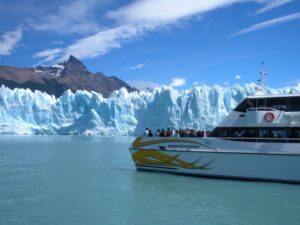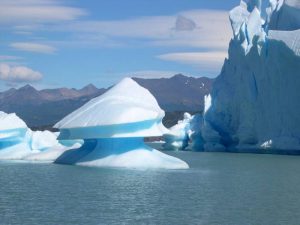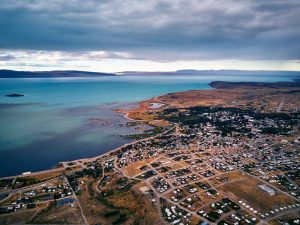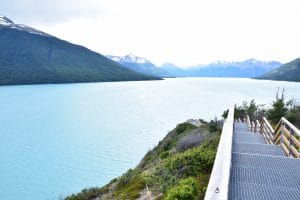Flanked by mountains and facing a glistening ice blue lake, El Calafate is one of the most popular destinations in Patagonia. This cozy little town is the gateway to Los Glaciares National Park. This guide will help you plan your trip and find how to get to Calafate.
Inspiring El Calafate- How to get to Calafate.
In the southwest of Argentine Patagonia, El Calafate is located on the shores of Lago Argentino, the largest lake in the country. The city dates back to the early 20th century, when it was founded by sheep farmers and wool merchants. It takes its name from a Patagonian bush: according to local legend, if you eat calafate berries, you will surely return to the region.
El Calafate expanded steadily throughout the 20th century, but the pace has accelerated dramatically in recent decades, thanks to the growing popularity of Los Glaciares National Park, located 60 miles (97 km) to the west. Today, this city of around 26,000 residents has a slightly uneven feel, with its myriad hotels, guesthouses, restaurants, cafes, travel agencies, souvenir shops, and casinos built in a variety of contrasting and sometimes shocking architectural styles. .
However, El Calafate is a cozy, well-equipped place and an essential stop on any Patagonian itinerary.
What to see in El Calafate
Where to stay in Calafate
Explore the Majestic Ice: Your Ultimate Perito Moreno Glacier Tour Guide
What to Do in El Calafate in Winter: A Guide to Enjoying the Snowy Season
What to do in El Calafate in 3 days
Where is El Calafate
Planning your visit – How to get to Calafate
A two-day stay in El Calafate gives you plenty of time to see the main sights, although a three- or even four-day trip gives you the opportunity to further explore Los Glaciares National Park.
It’s also easy to incorporate El Calafate into a broader tour of Argentina, for example on this 15-day trip, which focuses on nature and wildlife.
El Calafate has several banks and ATMs, most located in the center, and credit and debit cards are widely accepted.
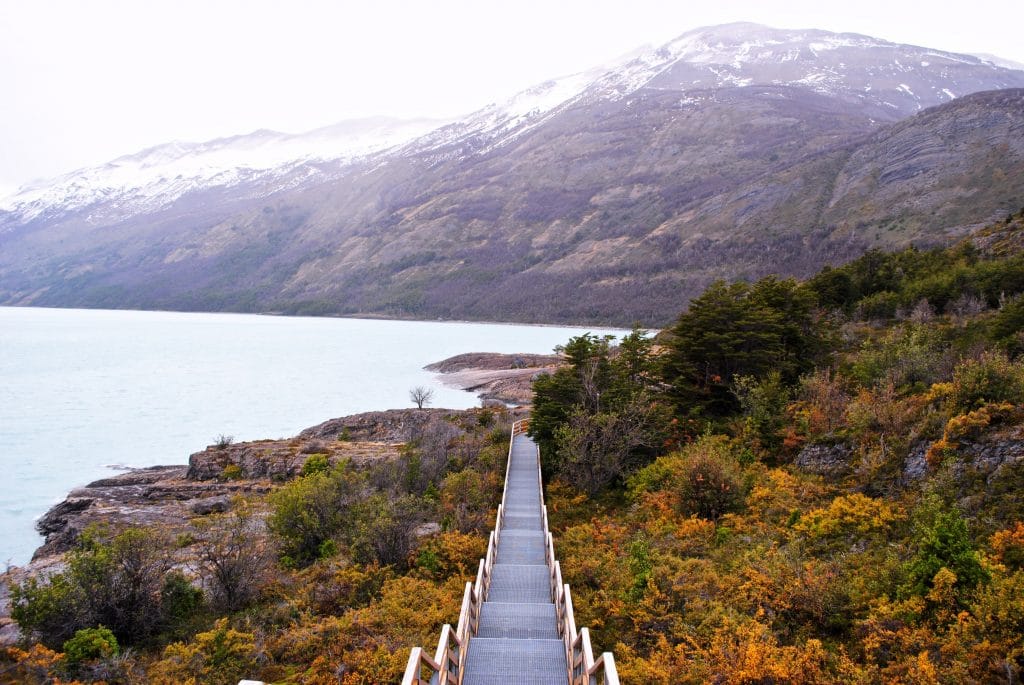
Weather
Summer (January and February; 41-61 ° F / 5-16 ° C) and Easter are the peak tourist seasons, when El Calafate gets packed to the brim. If you can, try visiting in spring (November to mid-December; 37-59 ° F / 3-15 ° C) or fall (March and April; 34-55 ° F / 1-13 ° C), when the city is considerably quieter, but tourist facilities are still operational. Many places are closed for the winter, particularly in July and August (23-39 ° F / -5-4 ° C), with severely reduced transportation options.
How to get to Calafate
The modern El Calafate airport is a 20-30 minute drive east of the city. It has daily flights to / from Buenos Aires, Bariloche and Ushuaia, and several weekly to Trelew, mostly with Aerolineas Argentinas and LATAM.
The bus station, in the center, has daily services during the summer to / from Bariloche, El Chaltén and Río Gallegos, as well as Puerto Natales in Chile; there is a very short schedule during winter.
El Calafate is compact and easy to explore on foot. You can explore the area around the city, including the national park, on an organized tour, although renting a car gives you much more freedom. Taxis are also widely available.
Highlights and Activities- How to get to Calafate
Glacier viewing in the nearby national park is by far El Calafate’s biggest attraction, though the city also boasts a pleasant nature reserve and a couple of fascinating museums.
Los Glaciares National Park
With more than 7,300 square kilometers of mountains, forests, steppes and, of course, glaciers, Los Glaciares National Park is one of the best protected areas in South America. About 30 percent of this UNESCO World Heritage Site is covered by a strip of the vast Southern Patagonian Ice Field.
El Calafate is the starting point for visits to the southern section of the park, where the biggest attraction is the magnificent Perito Moreno Glacier, which stretches out into a channel dotted with icebergs from Lake Argentino. (El Chaltén, 214 km north of El Calafate, is the gateway to the northern section of the park).
You can admire the glacier from several different viewpoints or on a boat trip, but for a closer look, put on a pair of crampons and join a guided walk across its surface.
Other attractions in this part of the park include the even larger Upsala Glacier and Roca Lake, a popular place in the summer for camping and fishing.
Glaciarium – how to get to Calafate
An ideal accompaniment to a visit to the national park, the Glaciarium is an impressive modern museum dedicated to ice, glaciers and climate change. Use multimedia displays, 3D models, video, audio, art, and photography to bring problems to life. The Glaciarium is also home to South America’s first ice bar, as well as a well-stocked souvenir shop. It is located 4 miles (6 km) west of El Calafate, on the way to the national park, and is connected to the city by a free bus service.
El Calafate Historical Interpretation Center
On the outskirts of El Calafate, this small and interesting museum provides an insight into Patagonian history, from prehistory to the present day. It has an eclectic range of exhibits, including dinosaur skeletons, examples of ancient rock art, and displays on the many indigenous cultures of the region.
Nimez Lagoon
A short walk north of the city center takes you to the peaceful Laguna Nimez Nature Reserve. This small park is home to around a hundred different species of birds, among which the flamingos stand out. You can also spot ibis, grebes, and highland geese.
Festivals and special events
El Calafate’s main festival is the FestivalLago Argentino, which takes place in mid-February and features a series of concerts, a variety of sporting events, fireworks displays, and plenty of food and drink.
Accommodation and catering
Where to stay
El Calafate has a wide range of accommodation options, although prices are generally high. Room rates are at their peak during the summer (January and February) and at Easter, when you must book well in advance; they drop significantly during the rest of the year, especially in winter.
Mid-range options include El Jardin de los Presentes, a reliable guesthouse a short walk from downtown; Linda Vista Apart Hotel, which has well-equipped apartments ideal for families or groups; and Posada Karut Joshimpecables, which has rooms and friendly staff.
There are also many top-notch hotels in El Calafate. Among the best are La Cantera, perched on a hill above the city and with attractive and spacious rooms; and the Edenia, which has well-equipped rooms, a sauna, and a good restaurant. Further afield, there are several atmospheric estancias (ranches), including Nibepo Aike, where you can walk or ride a horse through beautiful landscapes.
There are also several excellent hostels in the city with private rooms, some with excellent views of Lake Argentina.
Where to eat – How to get to Calafate
As with accommodation, eating out in El Calafate can be an expensive experience, though standards are generally high. Viva La Pepa is a colorful cafe serving delicious crepes, Olivia Coffee Shop has cappuccinos, and Kau Kaleshen is a charming tea room with homemade cakes during the day and a stunning restaurant at night.
No visit to El Calafate, or Patagonia in general, is complete without sampling some of the succulent local lamb. The elegant Casimiro Biguá offers expertly roasted lamb and veal, as does the equally good Don Pichon, which overlooks the lake and also serves fondue. Meanwhile, Pura Vida has a good variety of rustic and homemade dishes, many of them suitable for vegetarians.
El Calafate also has a great selection of bars and pubs. Try Borges y Alvarez Book-bar, which offers craft beers, hearty sandwiches and a variety of books to read or buy, or La Zorra Taproom, a lively brewery.



